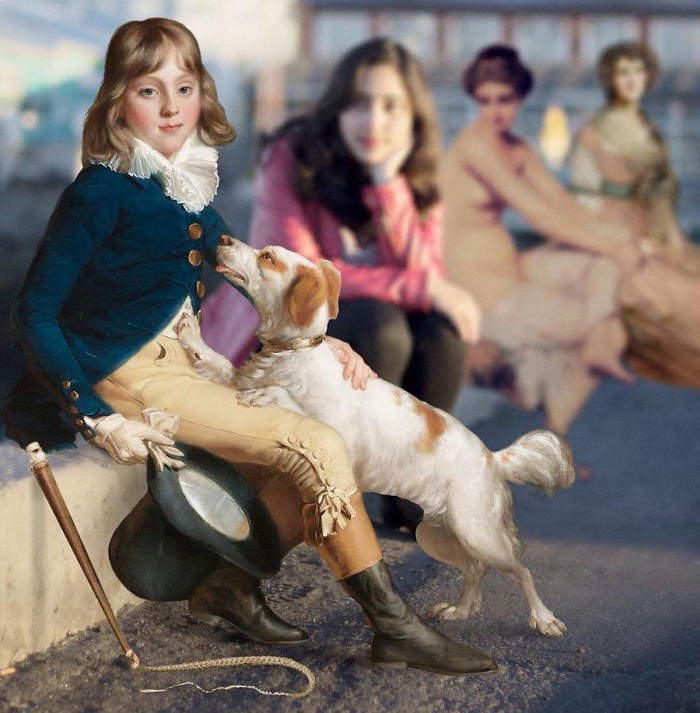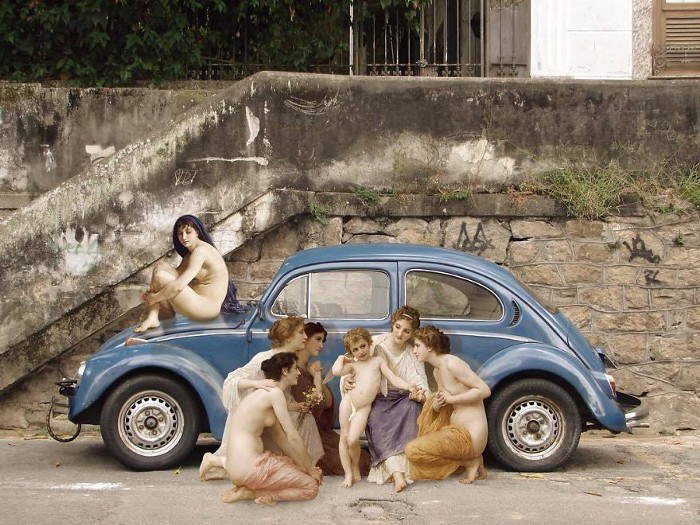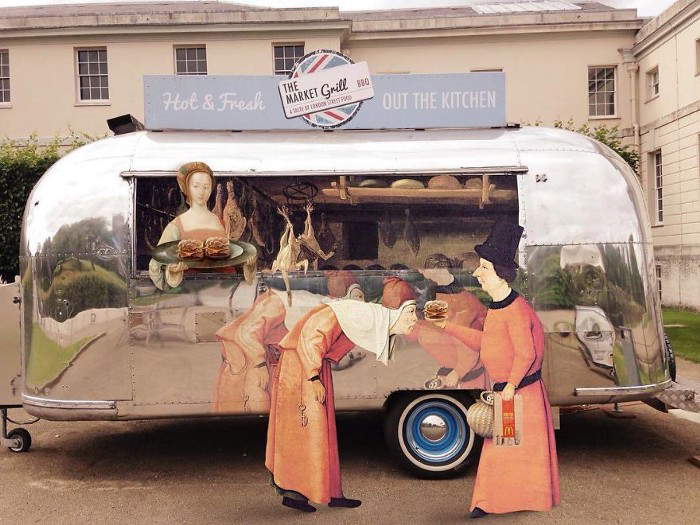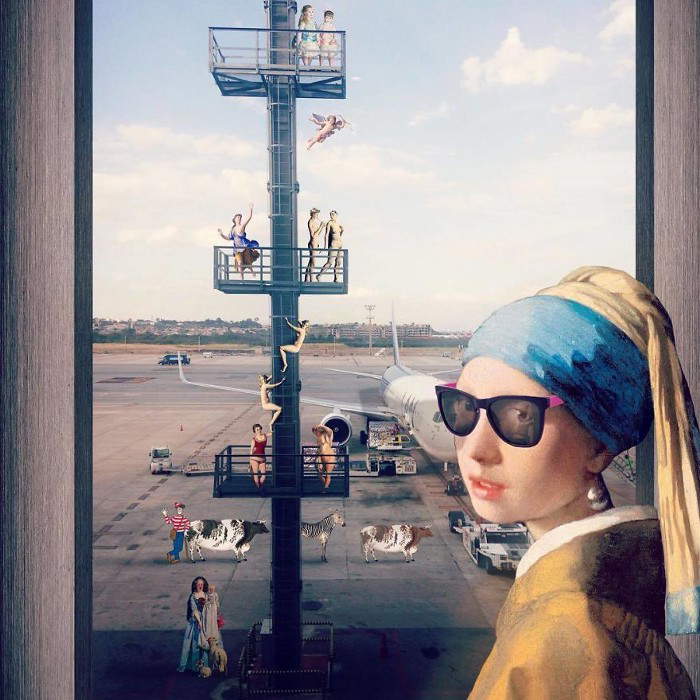Stuck in our homes as never before, and forced to learn to live much more within confined spaces, we tried hard to become much more familiar with keyhole views. I have chosen to describe the views that cameras and screens offered us, and still offer us, by comparing them to the view through a keyhole, that is, a view that is presented with a limited form and a restricted point of view.In some cases the experiment could be considered successful but in many others the physical experience continues to be the pivotal and essential one. The museum experience is full confirmation that the physical experience continues to be central in all senses.
The metaphor however should not be read in the strict sense of the word. Interactive platforms and virtual tours have been a great help in reaching wider and better online audiences. My comment refers to what was made available online so admirably and in such a short time, regardless of the fact that the vast majority of the content contained was a mere reworking presented in a new guise. Much of this consisted oftransferring a physical experience to an online platform in the hope that museum netizens would simply cross the bridge between the physical and the virtual, necessitated by circumstances.
 |
I would like to share an article by Seph Rodney, published on hyperallergic.com, to explain my point of view. Seph describes the experience of browsing museums online as “lonely and surprisingly limiting, even in the most technologically sophisticated terms...I feel like a curious explorer who has been marooned in a sprawling outpost where it is possible to survive for the foreseeable future. I will not starve, but I am eager to find my way back to the companionship of civilization in the flesh.”
However, technology presents us with new ways to interact, and Seph nonetheless shares his favorite experiences. There are indeed benefits to consider, and also tangible advantages to take advantage of. This is the case, for example, with the ability to take a closer look at objects and works through high-resolution images. In this case, technology completely nullifies the physical or visual distance we are constrained to in the real museum space. Information, and the great potential and absolute concentration of information on a specific topic, can also be made accessible in ways that, in physical space, are not possible unless the support of technology through mobile devices intervenes. In this sense, the interactive experience launched by the Rijksmuseum for Rembrandt’sNight Watch is very indicative.
Technology certainly offers potential to reach audiences, but the risks and pitfalls inherent in transposing a physical experience onto a virtual platform are also tangible and real. Steve Glavesky explains this very well in his article on remote work. Glavesky argues that what has happened so far, and this is also the case in the first wave of the pandemic, is the online transfer of physical work, but the need to adapt and take advantage of the medium is the next step to be considered. And this shift could consist of a mode of work that starts with asynchronous communication that is not about a fixed presence of hours to be established as working hours.
For museums, there are many similarities to be explored, particularly with regard to a renewed understanding of what I call “museum time” that is slowly taking shape.
 |
A few weeks ago, I was very intrigued by some very fresh and thought-provoking approaches in regards to segmenting audiences based on their emotional needs. A document available onlinecreatedin American museum circles lists specific audiences on the basis of their state of mind: bored people, desperate parents, confused teachers, grieving people...the list kept evolving as the pandemic spread. The approach reminds me of Marc Gobé’s concept of emotional branding , which talks about consumption based on the audience’s emottivity and fondness for a specific product beyond the need for the product and the smart choices to be made as part of any purchase.
And that there needs to be a focused and tailored audience classification at this time is a fact dictated by circumstances not just post-lockdown. Indeed, by its very nature, the digital world is about audiences, not means: audiences come first, and pigeonholing potential customers within a rigid demographic profile often leads to what can be described as “valuable waste.” The need for museums to move in this direction is pressing, and the ambition to do so is welcome.
There is, however, a paradox to point out.Empathy automatically implies setting aside learning, culture, knowledge, and opinion in order to truly and objectively understand one’s audience. For museums, in fact, it may not be easy to strike a balance between the need to achieve greater engagement through emotional data and the responses dictated by the knowledge and insight traditionally expected of institutions. However, much depends on the projects and the type of museum. As was recently discussed by journalist Rebecca Carlsson, some types of museums are better suited than others to follow this approach.But will the right approach be found for this museum world poised between relevance and resilience? It will be as much about the empathy of the museum institution with its audience as ever.
 |
How can empathy be achieved in meaningful ways?
Empathy is within everyone’s reach, and there are some simple tools and methods to help your museum walk in your audience’s shoes and better understand their needs.I propose three points that can help the museum reposition its thinking to become more open to empathy. All of these three points can be read and understood in relation to the exercise of segmenting audiences based on their emotional needs discussed here.
1. A humble ego
The institutional ego is often rooted in the history and tradition of the museum institution, and often manifests itself in its assertive, institutional or academic officialdom. Abandoning an official, egocentric way of seeing things fosters a clearer understanding of what the public might feel, or feel is needed. With the right amount of humility, and a willingness to abandon preconceived ideas, museums can improve their ability to empathize.
2. Good listening and observational skills
Empathy implies a deeper understanding of museum audiences, and this requires listening and observing attentively and vigilantly. By learning not to voice personal opinions and interpretations in an official tone, and to consider alternative interpretations and voices even if they are peripheral to the central academic discourse, museums can become more empathetic institutions. Moreover, by learning to read behaviors and consider a broader spectrum of feelings, museums can also gain a better understanding of users’ experience, ambitions, and aspirations.
3. Sincere curiosity
Considering the public from an official point of view when seeking help or information, rather than understanding their needs and aspirations, is an obstacle to empathy. Museums exist to serve the needs of their audiences. If we learn to understand what it is that motivates audiences and potential museum audiences, and if we do so with the right curiosity, we can gain new looks, find unexpected ways to engage and explore the lives of audiences in more inclusive ways. So let museums prepare themselves to reap greater benefits through a deeper understanding of their audiences.
However, empathy will cover both the physical experience and the digital or virtual experience. It is a new world of the museum that could arise from the keyhole views we experienced during the pandemic lockdown.
 |
Theimages in this article are from The Canvas Project by Brazilian artist Gabriel Nardelli Araújo .
Warning: the translation into English of the original Italian article was created using automatic tools. We undertake to review all articles, but we do not guarantee the total absence of inaccuracies in the translation due to the program. You can find the original by clicking on the ITA button. If you find any mistake,please contact us.